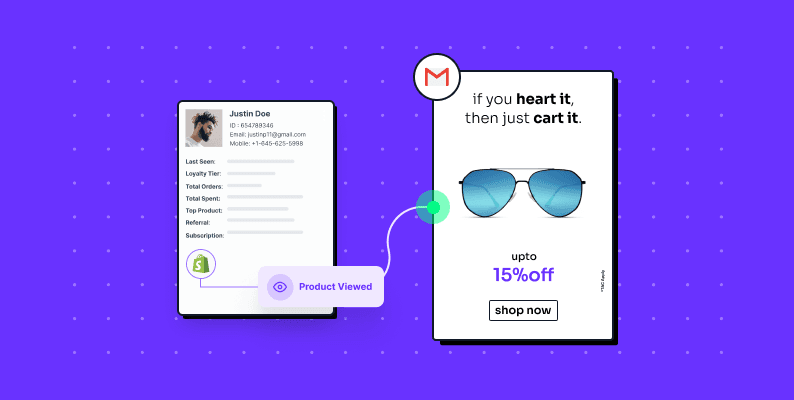With access to years’ worth of customer data, deep pockets and advanced tech capabilities, big brand ecommerce has been acing hyper-personalization strategies to keep their customers coming back. There is a lot for DTC brands to learn from big brand ecommerce, and this blog post is all about those lessons. And, we have a tip for you at the end. Read on to find out more!
“During the pandemic, direct-to-customer brands with thriving ecommerce experiences were able to very quickly and easily pivot their marketing and messaging, their energy. They didn’t have to fundamentally rethink their business model.”This insight is from Hana Abaza, the Global Director of Marketing for Shopify. She accurately summarizes the growth of DTC brands in the last couple of years.
Statistics reiterate this observation. According to McKinsey, the rise of DTC brands was so accelerated that they achieved their global 10-year prediction for growth in just 3 months – during the peak of the pandemic months in 2020. In the US and in 2020 alone, DTC sales grew by almost 25%. But with the pandemic loosening its clutches, DTC brands will have to upgrade their marketing and customer experience tactics. They need to pivot to continue capturing the attention of online shoppers.
This blog will explore three hyper-personalization strategies that DTC brands can adopt. These are tried-and-tested methods big ecommerce brands employ to successfully create tailored experiences for their customers.
Let’s look at some examples, shall we?
Amazon

This user has been searching for an inexpensive black tee as a birthday gift for a male friend. After searching for an hour and giving up, she received this email from Amazon.
With the price and rating mentioned and the recommendation being right on point, the user is likely to make the purchase. Amazon has mastered the art of quick and relevant recommendations to their users based on their search history.
This step makes the shopping experience smoother, thus generating affinity among shoppers.
Dynamite
The customer had been looking for office wear ever since her workplace announced it was time to head back to the office. Dynamite took this as an opportunity to send an email with a curated collection of work-wear with a catchy “Revamp Your 9-5” tagline.
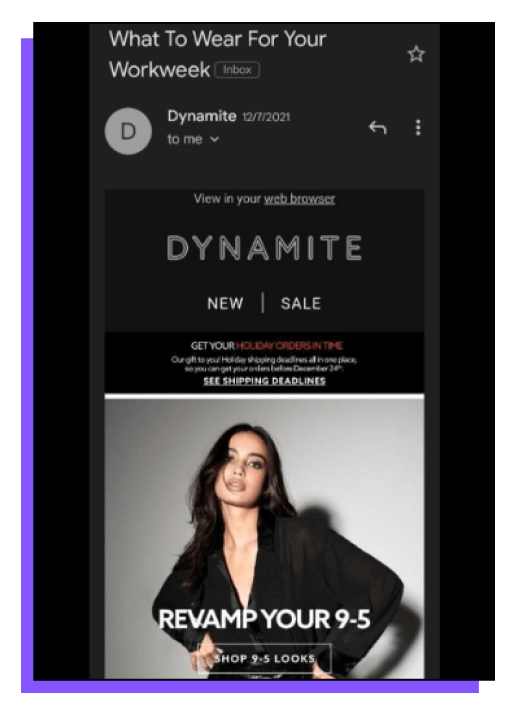
This is directly relevant to the customer because of their real-time and real-world needs. Dynamite nailed personalization techniques based on the time a potential customer spent on a particular category of products.
Instacart
Instacart became a lifeline for US customers during the pandemic as stores shut down and delivery became the gold standard.
While this brand upped its marketing game in general, it employed specific actions too. One such plan was to cross-sell to nudge their regular users to buy sausages in addition to their usual grocery list.
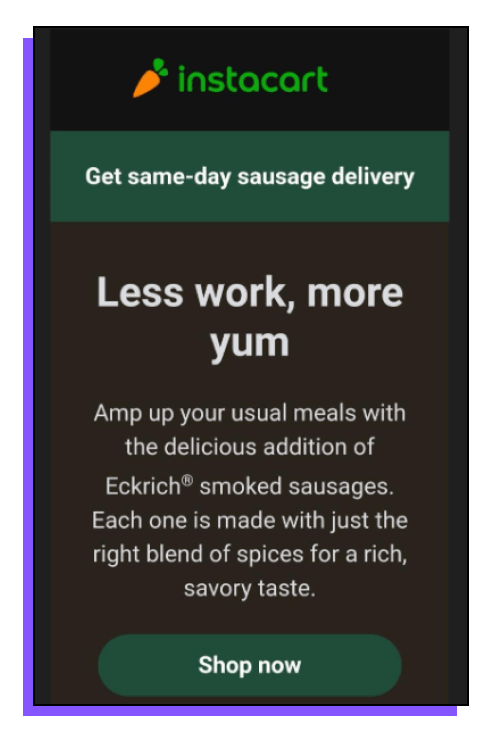
Instacart sent these emails to only those who had purchased meat from them before. Adding the same-day delivery option in their email was a smart move since frozen foods are often a quick alternative to other meals that take longer to prep. This shows that the brand understands the customer’s thought process while buying quick meals.
What do these ecommerce brands teach us about customer engagement?
That hyper-personalization is at the core of their marketing and engagement strategies. Hyper-personalization is easy when you dive into the customer’s purchasing history and demographics using a CDP and make a customer’s shopping experience stress-free and seamless.
Ecommerce brands combine the following strategies to form a powerful hyper-personalization approach. With these, each customer feels like their individual needs are being taken care of:
- Upselling and cross-selling in line with purchase history;
- Creating curated offers based on user behavior;
- Accounting for weather, season, or location when making recommendations;
- Incentivizing the user to opt-in to marketing emails through discounts.
Three guiding principles dictate how brands should deploy these strategies
These hyper-personalization lessons have been the holy grail for big brand ecommerce for years. DTC brands looking to maximize conversions should ensure their campaigns follow one or more of these easy-to-deploy guiding principles:
Tip 1: Time the offer right
A significant chunk of your marketing and customer-engagement campaigns will go ignored if they are ill-timed. For example, if you send summer wear clothing to someone when it’s snowing in their location, they are not likely to open the email no matter how lovely the collection might be.
Similarly, when someone abandons the buying journey mid-way, a well-timed reminder can bring them back on track (whether through an ad or an SMS) and encourage them to complete the purchase.
Incentivizing your shoppers with a discount to complete their purchase will help convert abandoned leads into paying customers. If not, simply allowing them to tell you why they didn’t complete the purchase despite visiting the website will unlock further insights, as is evident from this Nespresso example.
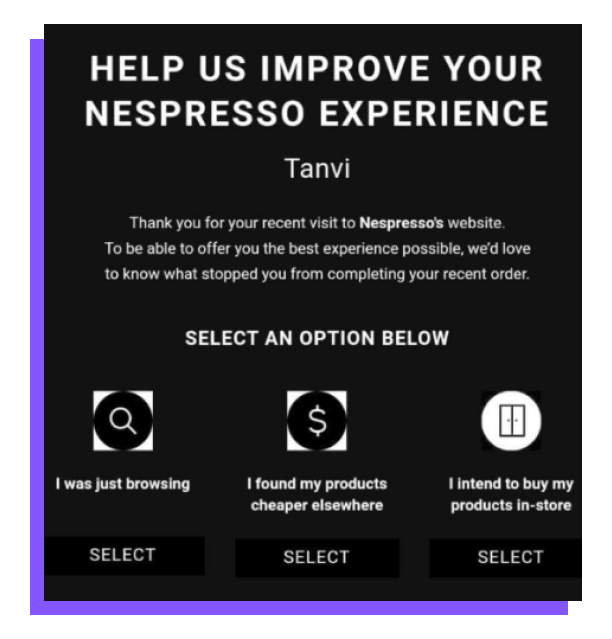
Another approach to this strategy is to use audience segmentation to identify which segment celebrates which kind of holiday. Target them accordingly.
For example, this brand sent Easter-themed offers to customers who searched for or bought something Easter-related the previous year. This level of hyper-personalization leads to high conversions.

Another golden opportunity to target your customer with an offer is when they have opted-in for your newsletter. Send them an email thanking them for subscribing and throw in a discount code. You have piqued their attention, so leverage that into action by incentivizing them and appreciating them.
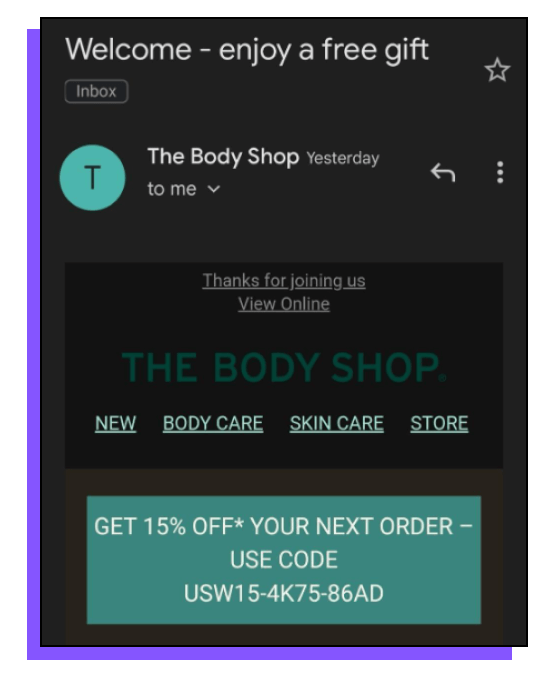
A competitive CDP partner will help you automate all these processes to target customers with relevant offers at the correct time and on the right channel.
Tip 2: Deploy the 3P model – personalized product pitches
Personalizing your campaigns no longer starts or ends with inserting the customer’s name in the ad (although it does help grab attention!). With marketing automation across the customer journey, you can offer everything from AR and VR experiences and match the in-store vibe to build customer knowledge and make choosing products easier (as done by skincare brands like Glossier through a skincare quiz).
With actionable marketing communication, reel in customers with new product offerings that match their purchase history. Phrase the email in a way that makes the customer feel you have been thinking about them.
This ad from Dorothy Perkins does precisely that. The full-length email features a curated wardrobe that appeals to busy moms and professionals who don’t have the time to coordinate their wardrobes. Dorothy Perkin’s emails targeted this exact audience cohort.
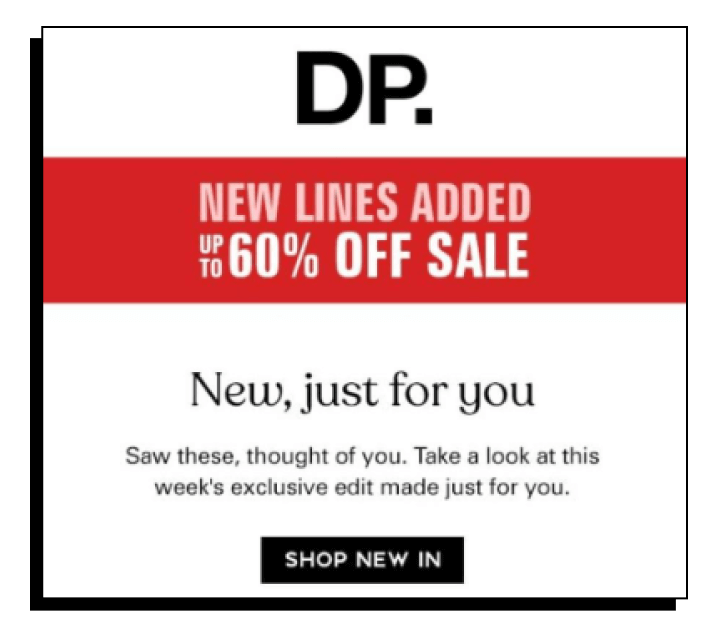
Such tailored pitches come from data that provides a holistic, 360-degree view of the customer. DTC brands will be able to nail the insights they need for hyper-personalization with a dedicated CDP that compiles customer data from different channels.
Tip 3: Identify and solve for customer pain points
Ultimately, marketing communication that solves specific pain points will be the most successful.
An essential outcome you should look for from your customer data is that it should highlight an immediate shopper problem that needs solving.
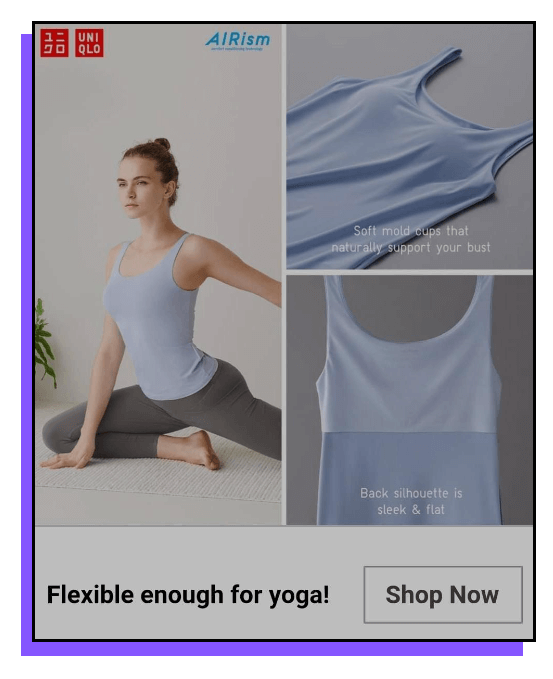
Uniqlo sends these emails in the US during the summer, when women struggle to find sweat-resistant workout clothing that is comfortable.
DTC brands have to keep in mind that different audience segments may have various challenges, and their targeted emails, SMS and all other touchpoints should speak to these challenges.
Are these lessons challenging to adopt?
New DTC brands using big ecommerce brands’ marketing playbooks may find it difficult to incorporate some of these strategies and the three tips. Crafting the perfect set of hyper-personalization campaigns that drive high ROI can be overwhelming, not to mention rather expensive.
But the democratization of CDP for modern DTC brands is well on its way with a new CDP in the market – Lifesight! Sign up for early access today. We’re ready to help you cut through the noise and walk you into the new era of customer engagement for your DTC brand.
You may also like
Essential resources for your success
